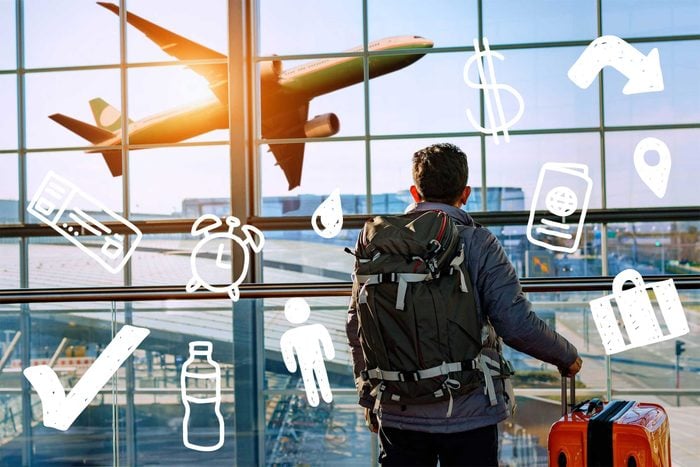
The right way to handle airplane travel
I know this might sound crazy to you, but airplane travel doesn’t stress me out (most of the time). In fact, I generally enjoy most parts of the experience, whether it’s navigating the airport or being on the plane itself. Sure, it’s never fun to wait in a TSA security line or deal with delays, but there are ways to reduce these pain points, which makes for a much smoother trip.
Yes, I am an aviation geek, but this isn’t the only reason for my attitude toward flying. It’s just that I have a lot of experience with this type of travel. I fly regularly (at a minimum, I’m on a plane several times a month) and cover all aspects of the airline industry as a journalist. As a result, I’ve learned how to find the best seats, avoid hefty airline fees, breeze through security and so much more.
And I’m about to share all of these secrets with you. Here are the airplane-travel rules to follow before booking your next trip.
Get Reader’s Digest’s Read Up newsletter for more travel, tech, humor, cleaning and fun facts all week long.
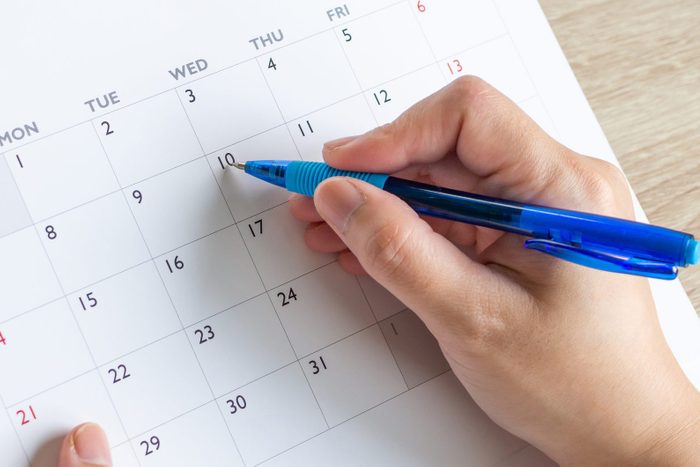
Book your flight early—but not too early
When you book a flight at the last minute, the airline’s systems suspect you’re a business traveler not overly concerned about cost. This can make things really expensive. To avoid this, booking app Hopper recommends monitoring prices for domestic flights about three to four months ahead of time. However, you’ll generally want to book your flight a month or two out. That’s when airlines may notice there aren’t enough seats filled and drop the price to entice travelers. Just don’t wait too long: Airfare “begins to rise rapidly” three to four weeks before takeoff, Hopper says.
The one exception to this airplane-travel rule? If you’re flying on a major holiday weekend. This fall, for instance, Hopper suggested Christmas travelers book their flights by early to mid-October.
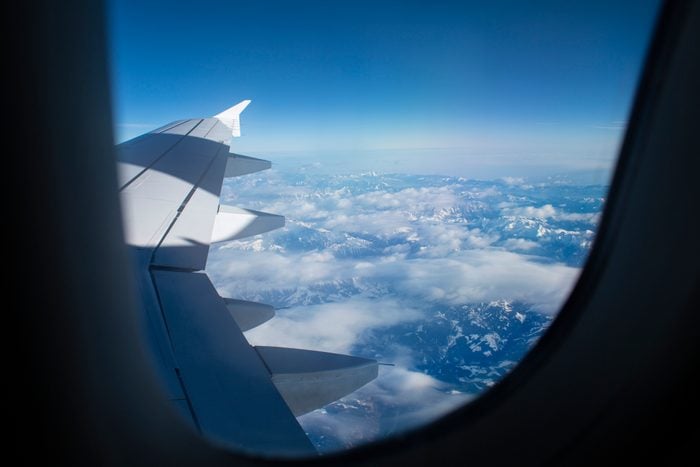
Fly early in the week to save money
You’ve probably heard that you can score a cheaper fare if you book at midnight on a Tuesday, but this is a myth. According to Google Flights, though, you will find cheaper flights if you travel on a Monday, Tuesday or Wednesday—12% cheaper than a weekend. This is all about supply and demand, of course, and when most people fly.
Pro tip: Check Southwest‘s website for targeted deals. According to Southwest’s chief commercial officer, the airline has been offering discounted flights on Tuesdays and Wednesdays.
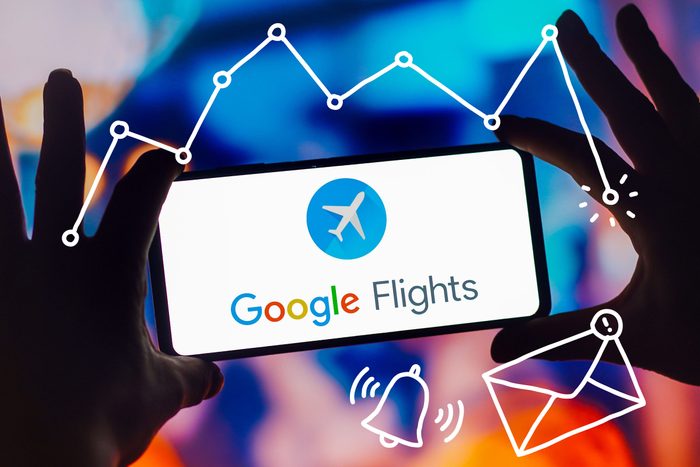
Use Google Flights to find the lowest fares
I always start my search on Google Flights, since this flight price tracker scans numerous airlines in just seconds. You can also add search filters for your preferences, such as layovers or nonstop flights, as well as filter out any airlines you don’t want to fly. Once I find the itinerary I want, I’ll go to that airline’s website to book it.
Not ready to book? Google Flights will let you set airfare alerts for the itinerary you selected. Once you do that, you’ll get emails whenever the price changes. For some itineraries, Google Flights will even recommend whether you should book now or wait, based on historical price trends.
Just keep in mind that Google Flights doesn’t display fares from Southwest. If you want to fly that airline, check Southwest’s website separately and see how the options stack up against what you found on Google.

“Hold” your fare while you search for better deals
If you haven’t heard of the “24-hour rule,” it’s about to become your new best friend. Under policy set by the U.S. Department of Transportation, as long as you book at least seven days out, airlines either have to let you cancel a ticket for a full refund (even a nonrefundable ticket) or give you the chance to put a 24-hour risk-free “hold” on your ticket—meaning, your price is locked and your seat is held, but you don’t have to pay immediately. This can be very helpful if your plans aren’t quite set in stone, if your plans change or if the price drops the next day.
I always make use of this “courtesy hold” on American Airlines. To do it, you just click “hold” at checkout instead of entering your credit card information. United Airlines offers a similar “fare lock” option, but it costs a few dollars.
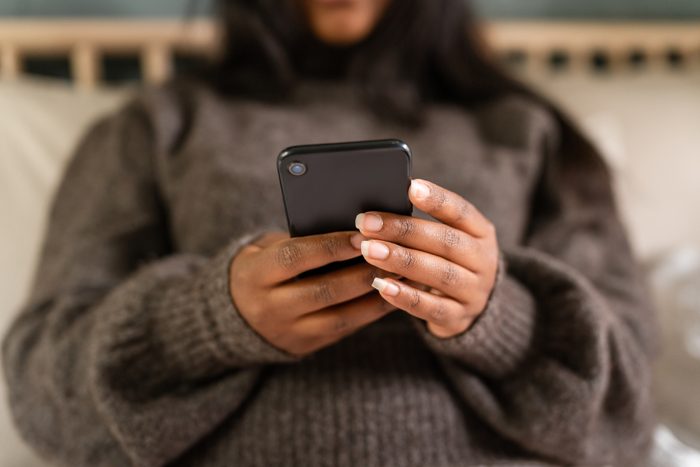
Cancel and rebook if you find a better price
On American, Delta, United and Southwest, if you book and then find a better price days—or even weeks—later, you can usually cancel, get back what you paid in airline trip credit, then use the credit to rebook at the lower price point. You won’t get a refund for the price difference, but you can use that credit for a future trip. One important note: This airplane-travel trick generally does not apply to the more restrictive “basic economy” tickets.
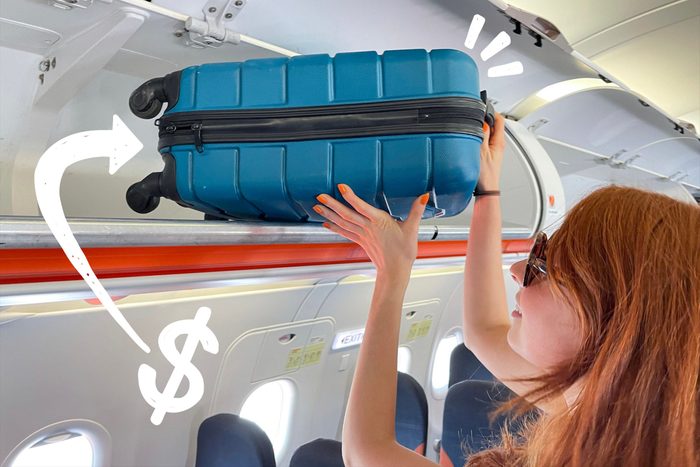
Read the fine print for hidden fees
Don’t assume you’ll get a full-size carry-on bag or free seat selection with your ticket. Nearly every budget airline charges extra for both—and sometimes it can amount to more than your airfare! Even the bigger airlines have surprising fees if you book a basic economy ticket. On United and JetBlue, fliers with basic economy tickets typically don’t get overhead-bin access. Frontier even charges $25 per person to speak to agents at its check-in counters. (Yes, you read that right.)
So as you book, pay close attention: The airline will specify what’s included and what’s not. This can help you decide whether to opt for the seemingly lowest-priced ticket or spring for a more expensive one that will allow you to choose your seat and bring a suitcase on board.
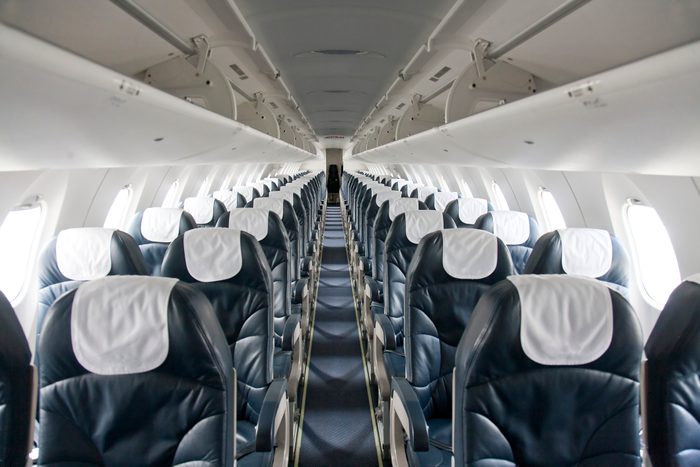
Consult third-party sites to find the best seat
Airlines have many different types of planes in their fleets, all with their own seating quirks. And beyond wanting an aisle or window seat, there’s a lot to consider, including exit rows, proximity to the lavatory, bulkhead seats that don’t have under-the-seat space, seats where part of the wall intrudes on your elbow room, and “window seats” without actual windows. Third-party sites like SeatGuru can help with this. With SeatGuru’s seat-map tool, you can enter your potential airline and flight number, scroll over a seat and read about its pros and cons. After all, seat 16A might be great on one aircraft but window-less on another.
One note: Always watch out for the “B” and “E” seats. Those are usually middle seats—at least on small and medium single-aisle planes.
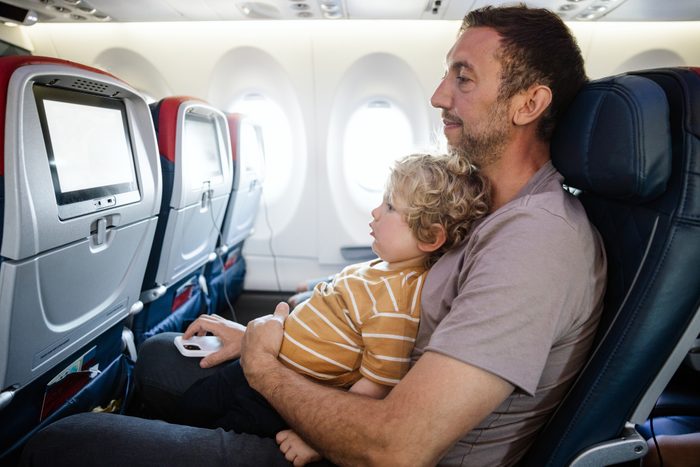
Check an airline’s family-seating grade before you book
Traveling with children? Consult the DOT’s dashboard, FlightRights.gov. This site grades airlines on whether they offer fee-free family seating for those traveling with children age 13 and younger. If your airline isn’t among those that passed the family-seating litmus test, sitting with your children isn’t guaranteed. Spoiler alert: Only four airlines passed the DOT’s test: Alaska, American, Frontier and JetBlue.
That said, you don’t necessarily need to write off airlines with a “failing” grade. You may just need extra assistance. For instance, though Delta Air Lines gets a red “X” on the federal dashboard, the airline says if you can’t find adjacent seating for your family, you should contact the airline’s reservations team to see if they can accommodate you.
Flying with a fur baby? These are the top airlines for traveling with pets.
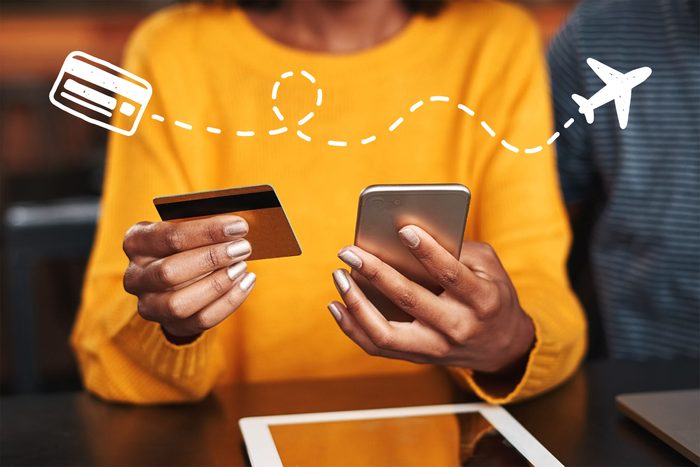
Book flights with a travel credit card
While travel cards usually come with annual fees (and sometimes higher APRs), they are worth it if you’re a frequent traveler. When I first started flying regularly, I sprang for one of American Airlines’s co-branded cards: the Citi/AAdvantage Platinum Select World Elite Mastercard. Although it had a $99 annual fee, it offered a free checked bag for me and my traveling companions on domestic flights. (This was a great airplane-travel cost-saver before I earned elite status on American and earned these perks separately).
All major U.S. airlines have their own suite of credit cards, most of which offer a free checked bag for you and your family members (in some capacity) and, often, other benefits like earlier boarding, discounts and lounge access. Then there are other travel credit cards that aren’t affiliated with airlines but still offer travel rewards. For instance, the Chase Sapphire Reserve card, which has a $550 annual fee, includes a wide-ranging $300 annual travel credit and an application fee credit for travel programs like TSA PreCheck and Global Entry, among other benefits.
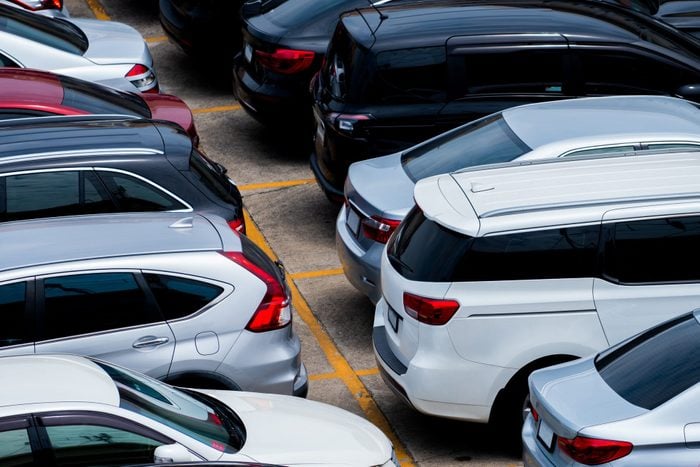
Reserve parking online and in advance
Many airports will allow you to reserve your spot in advance, online. Not only does this help guarantee you a spot, saving stress and time searching for a spot, but it can also save you money. Some airports offer steep discounts for booking parking in advance. For example, at Dallas/Fort Worth International and Houston’s George Bush Intercontinental airports, you can save up to 50% when you reserve parking ahead of time. Of course, these deals aren’t just in Texas. Head to your airport’s website to see what it offers.
You can also use the Parking Spot app to find off-site, nearby parking. It often offers coupon codes, and it’s a good option for when airport parking is booked or nonexistent.
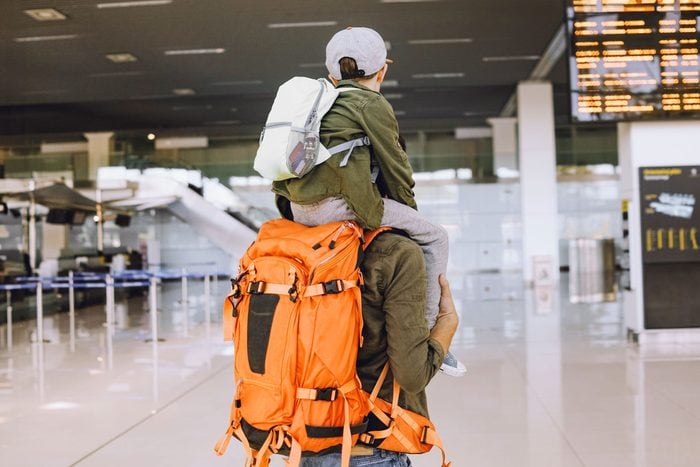
Have some family members “backpack it” to save
If you’re traveling as a family, combining your items into fewer suitcases minimizes how many travelers incur extra fees for bags. Trust me, this adds up.
Here’s an example: Let’s say I’m flying from my home airport, Raleigh-Durham International in North Carolina, to Orlando International Airport as a (hypothetical) family of four. A one-way ticket is just $39, but a full-sized bag (checked or carry-on bag) is $55 per person on this flight. However, everyone (on every U.S. airline, on every flight) is entitled to a “personal item,” like a backpack, that fits under the seat.
These are the questions I’d be asking myself after seeing this: Do all four of us need a full suitcase? Can we get by with two large pieces of luggage and the free backpacks? That’d be $220 in savings there and back. Just remember that this strategy requires advance planning, not a last-minute shuffling at the airport.
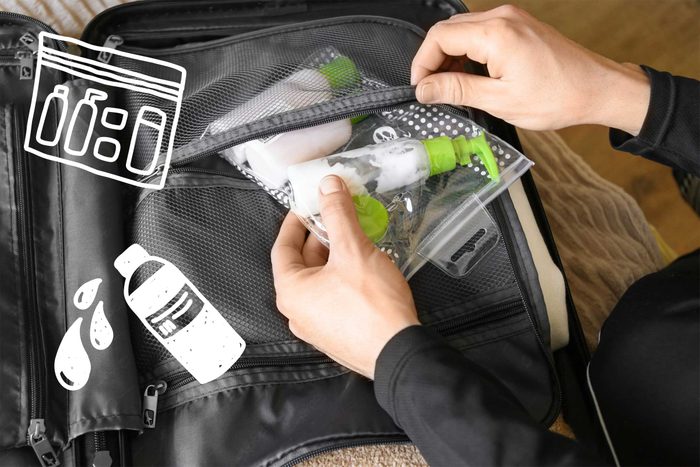
Abide by the 3-1-1 carry-on rule
The TSA has strict liquids rules for carry-on bags. What is the 3-1-1 rule, exactly? For liquids in a carry-on to be allowed through a security checkpoint, they must be in containers of no more than 3.4 ounces (that’s the 3), in a single 1-quart clear, resealable plastic bag (those are the 1’s). Translation: That big bottle of shampoo or sunscreen will need to go in your checked bag. There are some exemptions, however, for essential items like medication, breast milk and baby formula.
Can you bring food through a TSA checkpoint? Yes, but generally speaking, the TSA’s rule of thumb is this: “If you can spill it, spread it, spray it, pump it or pour it, and it’s larger than 3.4 ounces, then it should go in a checked bag.” You might be shocked to learn that a big jar of peanut butter and a hunk of brie are considered “liquids” under this rule!
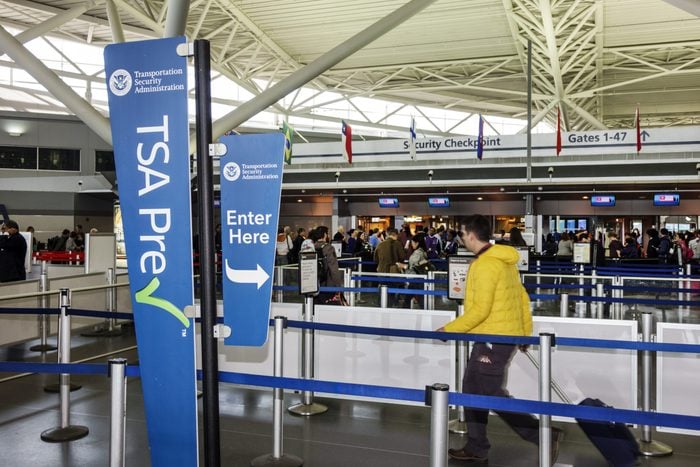
Breeze through security with a prescreening program
The key here is choosing the prescreening program that fits your travel needs best. The most popular is TSA PreCheck, which offers travelers a shorter security line during domestic travel. PreCheck members also don’t have to take off their shoes or outer layers, pull out their laptops or go through the full-body scanner. Meanwhile, CLEAR allows members to get their identity quickly verified via eye scan or fingerprint before being escorted to the front of the TSA line. Then there’s Global Entry for regular international travelers, which offers an expedited trip through U.S. customs after international flights and includes PreCheck access.
I’ve had Global Entry for more than five years, and CLEAR for about a year, and I rarely spend more than one or two minutes waiting at the TSA checkpoint. The past few times I’ve been through customs, Global Entry has been so efficient that I’ve barely even stopped walking on my way through. Talk about a time-saver and a stress-reducer!
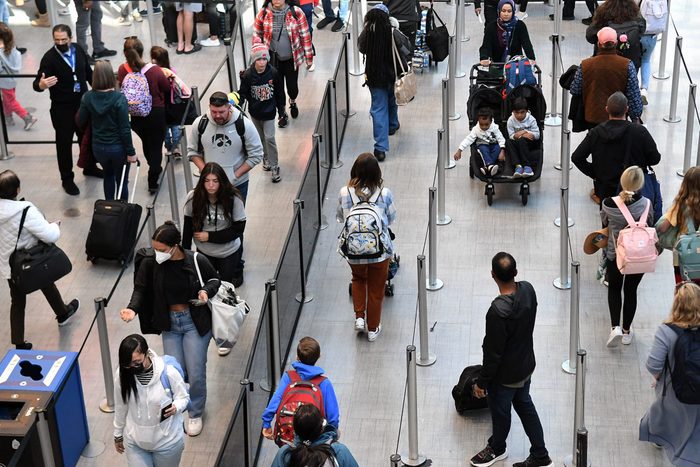
Consult the MyTSA app to reduce security wait times
Even if you don’t have TSA PreCheck, you don’t necessarily have to stand in an ultra-long security line. With the MyTSA app, you can check current and expected future checkpoint wait times at all U.S. airports. That means if you know you’ll be getting to the airport at 7 a.m. on Friday, you can search that window of time for an estimate of how long the wait will be.
If your estimated wait time is long, don’t panic. Instead, check to see if your airport offers a way to reserve your spot in line. Yes, some airports have programs that do this! Two that come to mind are LaGuardia Airport’s “B-Fast” in New York and “Fast Lane” at Los Angeles International Airport.
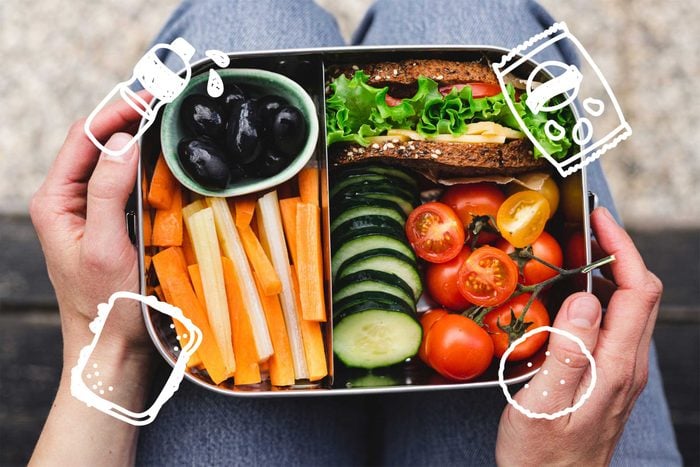
Bring snacks and water bottles to the airport
Don’t spend $5 for a bottle of water on the airport concourse if you don’t have to. (That’s $20 for a family of four, after all!) More and more airports now have water-bottle-filling stations once you get through security. So bring your reusable bottles—just make sure they’re empty before you get to the TSA line and fill them up once you’re on the other side.
You can also bring food and snacks if you want to eat a meal at the airport, as long as they meet the 3-1-1 rules. Now, that doesn’t mean everything needs to be super tiny and fit into a small plastic bag—that rule is specifically for liquids and liquid-like items. But feel free to bring sandwiches, meats, hard cheese and crackers, and even pizza … as long as it fits in your carry-on.
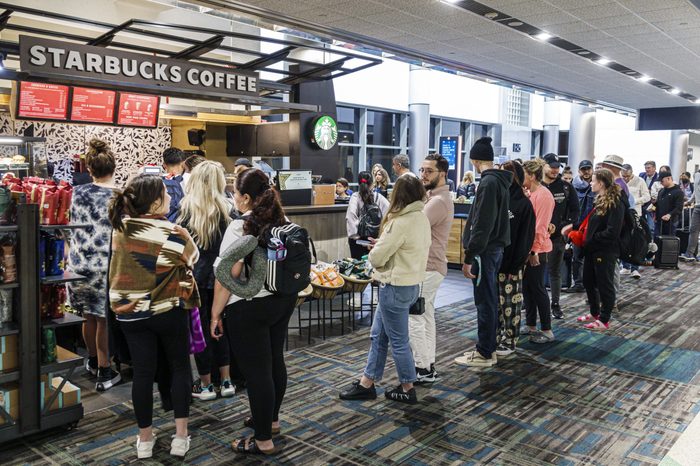
Order food and drinks online to avoid long wait times
Many airport Starbucks locations will now let you place a pickup order using your Starbucks app, and in my experience, it’s typically a lot faster than waiting in line. See another favorite chain restaurant on the airport concourse that typically offers mobile ordering, like Dunkin’ or McDonald’s? Check that company’s app, and see if that airport location pops up as an option.
Some airports also have their own mobile food-ordering services, where you can get a meal delivered to your gate. D.C.’s Dulles International and Reagan National airports, for example, rolled out options for this in 2022.
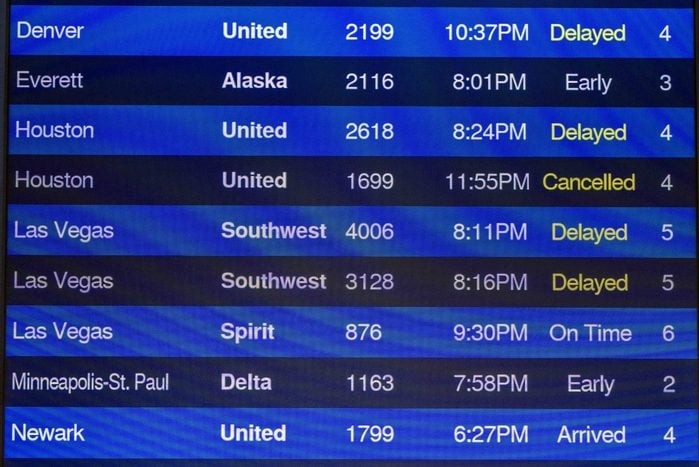
When your flight is delayed or canceled, log onto the airline’s app
The airline’s app should always be your first option in these situations—it’s definitely mine. I’ve found that when a flight is delayed or canceled, airlines will often offer the chance to rebook a new flight with just a few quick taps. (Plus, this way, I can avoid standing in a long customer service line.) And don’t wait to book the option if you see it—those seats will disappear fast. Don’t worry, though: The airline may let you rebook again later if a more ideal option shows up.
No luck with this method? Try this option: Stand in the customer service line and call the airline customer service line. Doing both maximizes the chances of a quick resolution.
Another option: If you’re a good multitasker (or have a spouse or traveling companion), pop open your laptop and see if you can chat with customer service. When these online chat options are available and there’s an actual human involved, the process can be a lot less time-consuming and frustrating than waiting on hold.
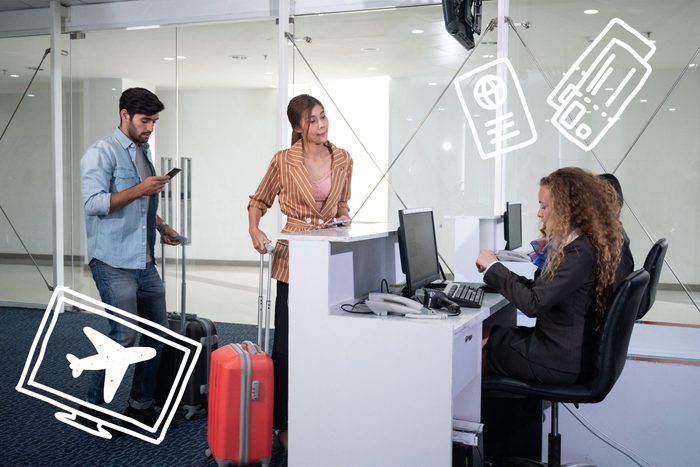
Use the airline lounge’s customer service desk to rebook a flight
If you are a member of an airline lounge, take advantage of this perk if your flight is delayed or canceled. The lines here are typically far shorter than what you’ll find on the airport concourse, and the helpful agents will help you find another flight. Just note that this service is limited to major airline-affiliated lounges, not at lounges operated by credit card companies.
These lounges can also be great places to ride out a long delay. Just be aware that on bad weather days, when tons of travelers end up stuck in the airport, they can get quite crowded.
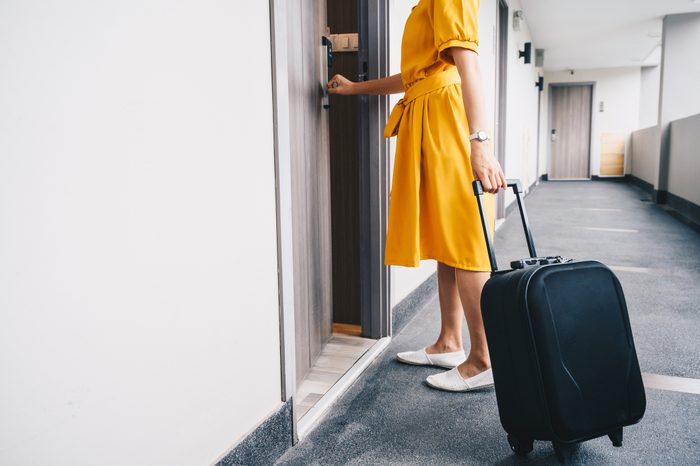
Get someone else to pay when you’re stranded
Getting stranded somewhere doesn’t have to be the end of the world, especially if someone else foots the bill for that extra hotel night, taxi ride and meal out! The first step is finding out the reason for the disruption. If it’s maintenance, staffing or something else within the airline’s control, consult the FlightRights.gov federal dashboard. This is where you’ll find information about which airlines will cover unexpected meals, hotel stays and/or ground transportation if the cancellation or delay is the airline’s fault.
And now for the bad news: If the source of trouble is weather-related, the airline typically won’t pay. For that reason, you might want to consider a travel credit card that offers trip-insurance protection. As I write this, I’m reminded that I need to make a claim for a weather-related snafu that stranded me in Atlanta overnight this fall. Because I booked the trip with an American Express card that offers travel protections, the unexpected hotel night and Uber ride should be covered.
A variety of travel cards offer such protections. Just make sure to book all aspects of the trip with that card to be eligible for a claim.
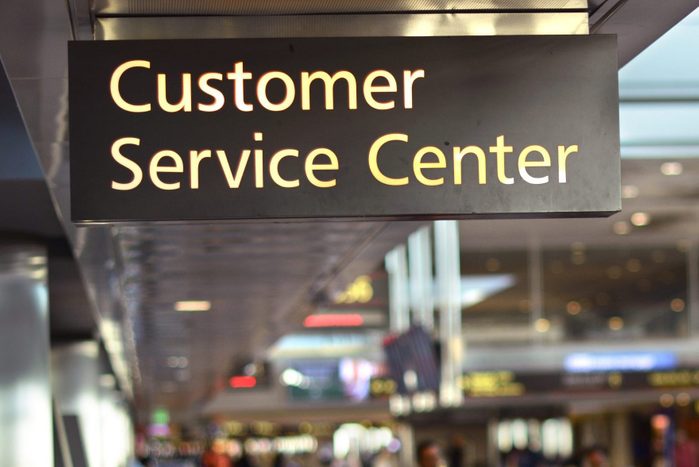
Know when you’re owed a refund
If your flight is canceled or significantly delayed, or if your itinerary significantly changes against your will, you are entitled to a refund—under federal policy—if you ultimately choose not to fly. The reason for the disruption doesn’t matter. Neither does your ticket type. And you don’t have to accept frequent-flier miles instead of a refund. So how do you make this happen? You’ll typically need to consult your airline’s customer service webpage and put in a request for a refund.
Keep in mind that if the airline offers to rebook you on a later flight, you’re not entitled to a refund. But if your 5 p.m. flight to New York is canceled and you decide, “You know what? I don’t feel like traveling anymore and want to cancel my trip,” the airline has to give you your money back.
Denied a refund you think you’re entitled to? File a consumer compliant on the DOT’s site. But first, start with the airline.
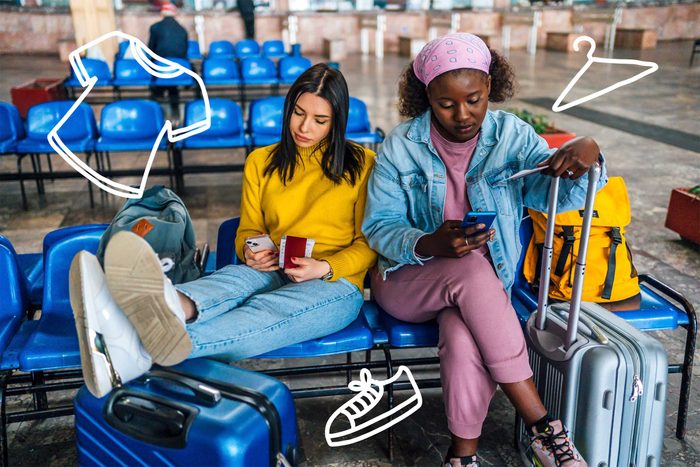
Wear comfy—but nice—clothes on your flight
For any airplane travel, I prefer loose, relatively comfortable clothes that are still appropriate to wear to, say, a restaurant or museum after I land. For me, that’s often athletic or chino-type pants with a T-shirt I can top with a quarter-zip sweater. Layers allow me to stay cool if the plane (or airport) is warm, and bundle up if the plane is hot. But everyone’s different, and here’s how a flight attendant suggests you dress for a flight.
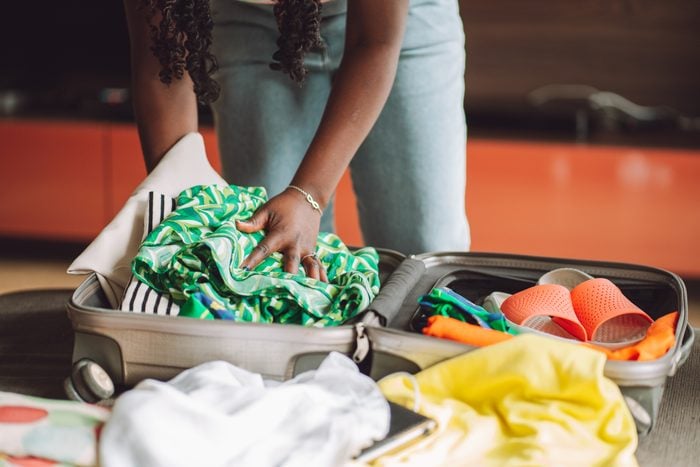
Pack a change of clothes in your carry-on luggage
My biggest air-travel wardrobe mistake is technically a packing mistake: not bringing a change of clothes on board in a carry-on bag. On one too many occasions, I’ve gotten unexpectedly stranded overnight with all of my clothes in a checked bag that I couldn’t access. After all, you often can’t get to your checked luggage until you reach your final destination.
One Reader’s Digest editor adds that bringing a change of clothes is also important if you have young kids—who might get sick or spill something on themselves and/or you. A little packing preparation goes a long way in those instances!
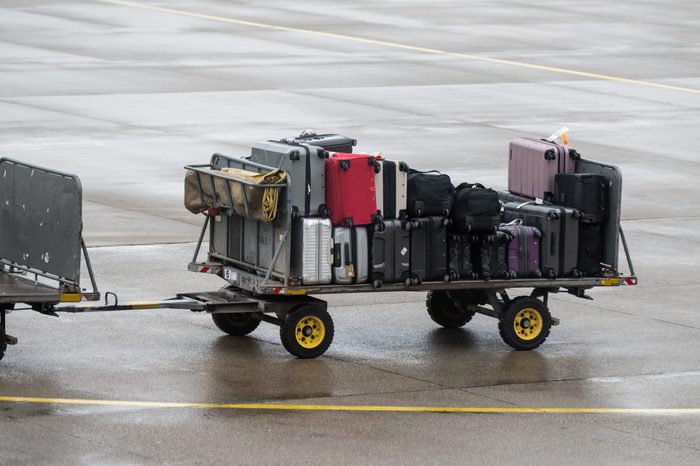
Always track your luggage
Unfortunately, lost luggage happens. Fortunately, technology has improved to the point where you can (and should) take matters into your own hands. If you’re traveling on American, Delta, United or Southwest, keep your airline app handy, since it will offer bag tracking; that means you can look to see when your bag is loaded and unloaded from the plane.
You may want to go even further, though—particularly if you’re flying on an airline that doesn’t offer these tracking services. Tools like Apple AirTags can help you track your belongings in real-time, giving you a live location for your bag. This can help both you and the airline narrow down your bag’s location if it gets lost.
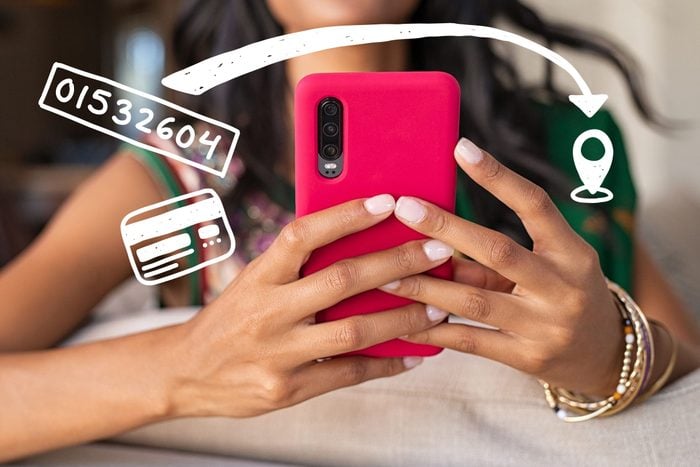
Add your frequent-flier number—even if you forgot to book with it
You should always create a frequent-flier account and add your number to an airline reservation, even if it’s not an airline you fly often. But if you’ve forgotten to do so, don’t despair. You can typically add it to an existing reservation. First, create an account. Then, log onto your airline’s website, search for your reservation using your trip confirmation number, and open up the traveler details. With most airlines, there will be a line where you can add your loyalty or frequent-flier number to your personal details.
In some cases, you can even add a frequent-flier number for a trip you recently completed. For instance, the Delta SkyMiles program has a page where you can request missing miles (and make other changes to your frequent-flier account).
Sources:
- Hopper: “2023 Travel Booking Hacks Guide”
- Hopper: “2023 Holiday Travel Outlook”
- Google Travel: “How to find the best deal on your next flight”
- Google Travel: “3 ways to find a great deal with Google Flights”
- U.S. Department of Transportation: “Refunds”
